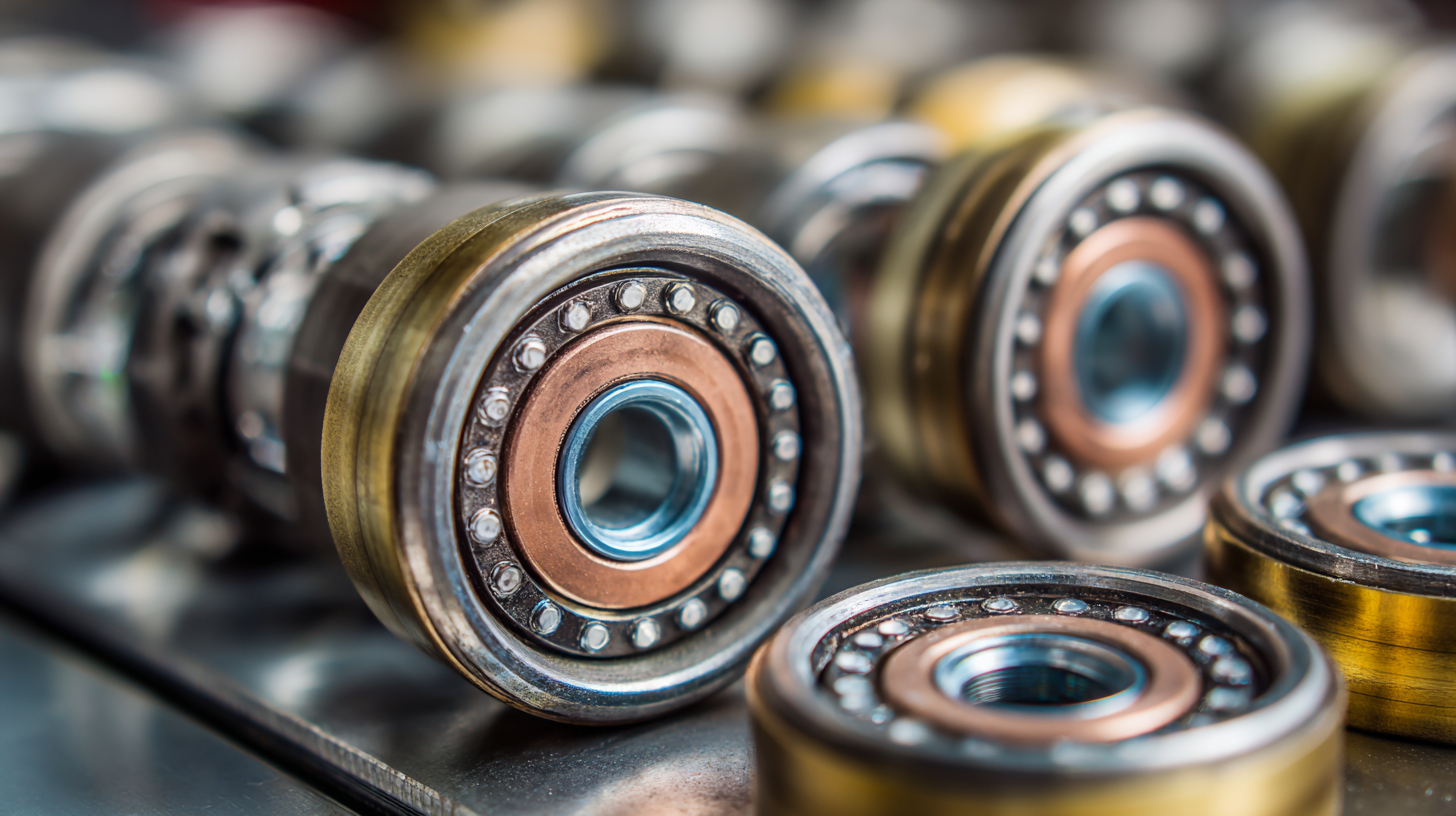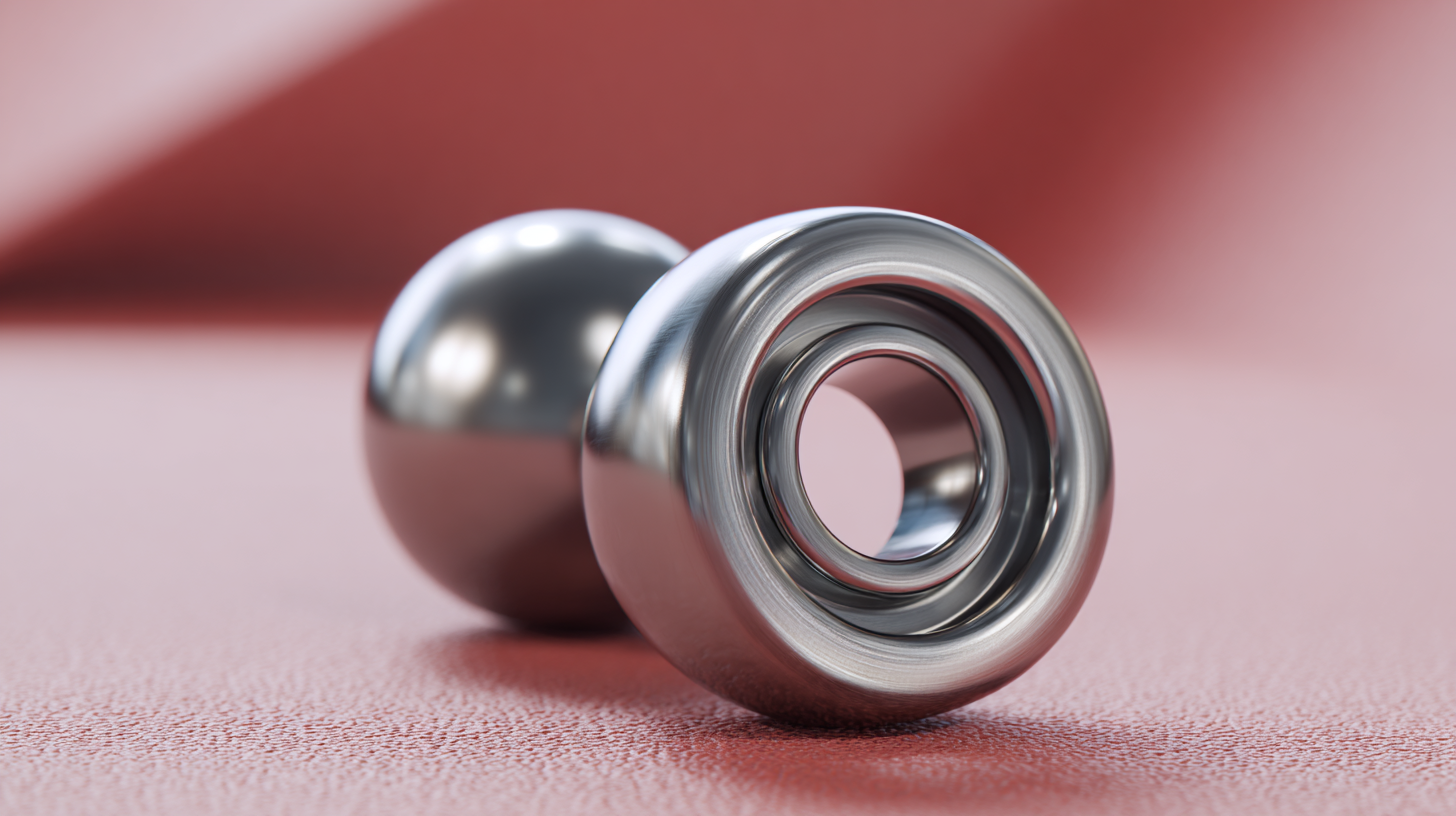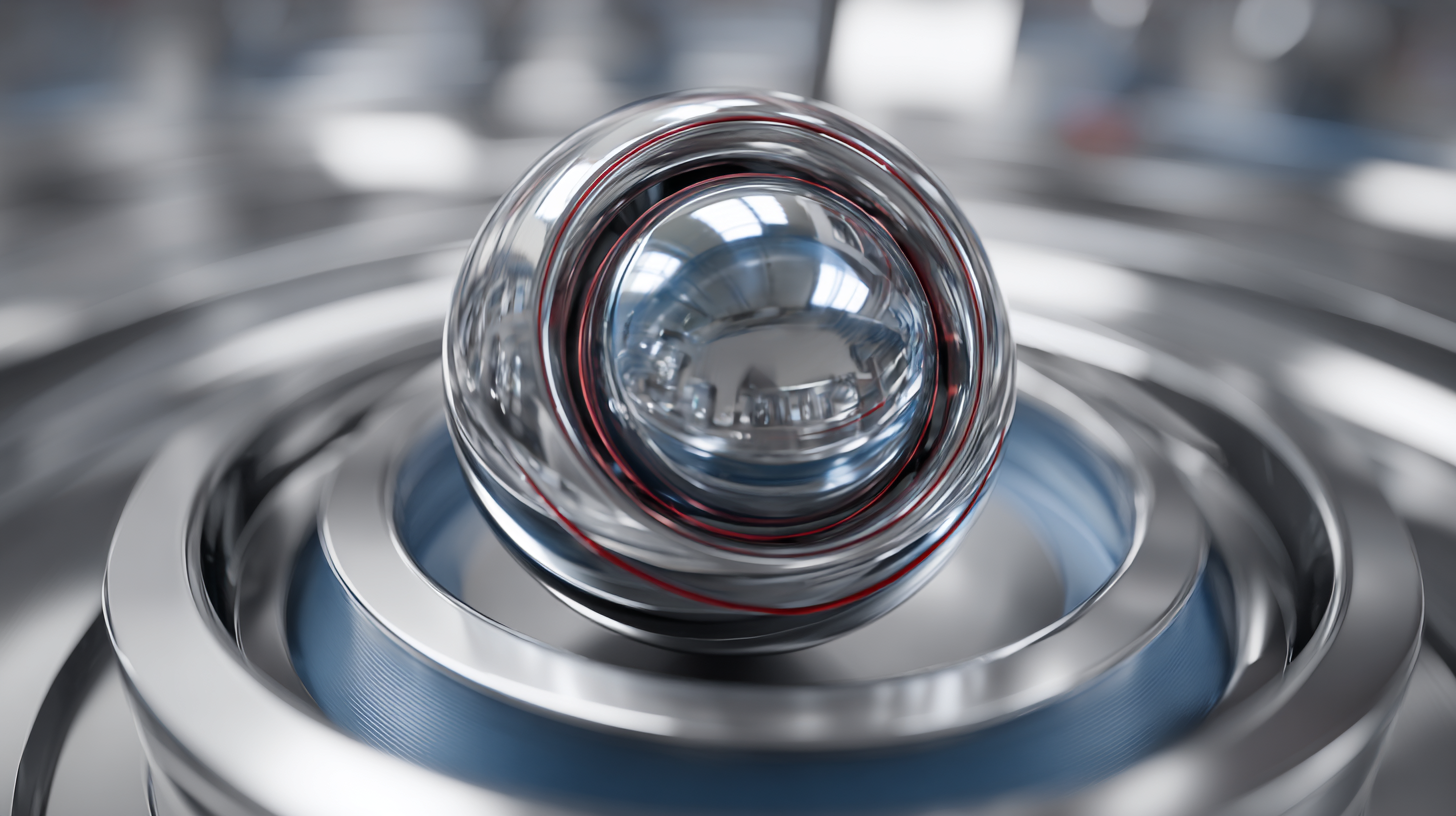Embracing the Future of Best Ball Race Bearings in 2025 Technology Trends
As we look ahead to 2025, the landscape of ball race bearings is poised for significant transformation, driven by rapid advancements in technology and increasing demand across various industries. A recent report by MarketsandMarkets highlights that the global bearing market is expected to reach $116.40 billion by 2025, with ball bearings capturing a substantial share due to their crucial application in automotive and aerospace sectors.
 Furthermore, the push for enhanced efficiency, lower friction, and improved load-bearing capacities will catalyze innovation in ball race bearing designs, prompting manufacturers to adopt smart materials and IoT integration. Understanding these trends is essential for stakeholders aiming to embrace the future of ball race bearings, which will not only improve performance but also align with sustainability goals in manufacturing processes.
Furthermore, the push for enhanced efficiency, lower friction, and improved load-bearing capacities will catalyze innovation in ball race bearing designs, prompting manufacturers to adopt smart materials and IoT integration. Understanding these trends is essential for stakeholders aiming to embrace the future of ball race bearings, which will not only improve performance but also align with sustainability goals in manufacturing processes.
Emerging Technologies Shaping Best Ball Race Bearings in 2025
The industry of best ball race bearings is experiencing a transformation as we approach 2025, driven by emerging technologies that enhance performance and efficiency. Innovations such as advanced materials and 3D printing are paving the way for lighter, stronger bearings that reduce friction and increase durability. The adoption of smart technologies is also on the rise, with sensors integrated into bearings that monitor performance in real time, allowing for proactive maintenance and optimization.
When selecting best ball race bearings, consider the benefits of new materials like ceramic composites, which offer superior wear resistance and lower weight. This can lead to improved efficiency in applications ranging from robotics to automotive engineering. Additionally, integrating IoT capabilities into your bearings can provide valuable data, enabling you to make informed decisions about maintenance and performance upgrades.
As we look to the future, it's essential to stay informed about these trends and their impact on bearing applications. Embracing these innovations not only enhances product quality but also positions your business at the forefront of industry advancements. Regularly evaluating the latest technology in bearing design will ensure that you remain competitive and efficient in an ever-evolving market.
Key Features of Different Types of Best Ball Race Bearings
In 2025, the landscape of best ball race bearings is set to evolve significantly, driven by technological innovations and increasing industrial demands. Key features to look out for include enhanced material composition, which extends the lifespan and performance efficiency of ball bearings. According to a report by Grand View Research, the global bearings market is projected to reach $117 billion by 2025, highlighting a surge in demand for high-performance components that can withstand extreme conditions while delivering reliable operation.
Another pivotal feature is the incorporation of smart technology into bearing systems. The integration of sensors and IoT capabilities allows for real-time monitoring of performance parameters, thus enabling predictive maintenance and minimizing downtime. A study published by Market Research Future indicates that the smart bearings market is anticipated to grow at a CAGR of 12% over the next few years, emphasizing the industry's shift towards more intelligent solutions. Higher precision, reduced friction, and improved thermal management are also critical aspects that manufacturers are focusing on, ensuring that best ball race bearings not only meet but exceed current performance benchmarks.
Embracing the Future of Best Ball Race Bearings in 2025 Technology Trends - Key Features of Different Types of Best Ball Race Bearings
| Type of Bearing |
Material |
Load Capacity (kg) |
Speed Rating (RPM) |
Temperature Range (°C) |
Key Features |
| Deep Groove Ball Bearing |
Steel |
3000 |
8000 |
-20 to 120 |
Versatile, low friction |
| Angular Contact Ball Bearing |
Ceramic |
2000 |
12000 |
-40 to 150 |
Higher speed, better axial load |
| Self-Aligning Ball Bearing |
Stainless Steel |
2800 |
6000 |
-30 to 100 |
Self-aligning, accommodates misalignment |
| Tapered Roller Bearing |
Alloy Steel |
4000 |
7000 |
-20 to 120 |
Handles both radial and axial loads |
| Spherical Roller Bearing |
Bronze |
5000 |
5000 |
-30 to 100 |
High load capacity, self-aligning |
Applications of Best Ball Race Bearings Across Various Industries
The Best Ball Race Bearings market is experiencing significant growth, with applications spanning across various industries including automotive, aerospace, and industrial machinery. According to a recent report by MarketsandMarkets, the global bearings market is projected to reach $160 billion by 2025, with ball bearings being a substantial contributor due to their efficiency and performance. The growing demand for lightweight and energy-efficient solutions is driving innovation in bearing technologies, enabling manufacturers to design components that withstand higher loads and speeds while minimizing wear.
In the automotive sector, Best Ball Race Bearings are crucial for enhancing fuel efficiency and improving vehicle performance. With electric vehicles gaining popularity, these bearings play a key role in optimizing the efficiency of electric motors and reducing friction in drivetrains. The aerospace industry also benefits from advancements in bearing technology, utilizing these components for safe and reliable operation in various aircraft systems.
Tip: Opt for bearings with lower friction coefficients to enhance performance in high-speed applications, as this can lead to longer service life and reduced maintenance costs. Monitoring bearing performance through predictive maintenance can also help in preventing failures and ensuring operational efficiency in heavy machinery.
Innovations Driving Efficiency in Ball Bearing Design and Usage
As we approach 2025, the landscape of ball bearing technology is rapidly evolving, driven by a wave of innovations aimed at enhancing efficiency and performance. One significant trend in bearing design is the development of advanced materials that reduce friction and wear. For instance, hybrid bearings combining ceramic and traditional steel components are becoming increasingly popular. These hybrids not only boast lower thermal expansion but also enhance load capacity, making them ideal for high-speed applications in industries like automotive and aerospace.
Additionally, smart bearing technology is emerging as a game-changer. Integrating sensors and IoT connectivity into ball bearings allows for real-time monitoring of their condition and performance. This innovation enables predictive maintenance, minimizing downtime, and reducing maintenance costs. By analyzing data collected from these smart bearings, manufacturers can optimize their designs further, adapting to specific operational conditions and prolonging product lifespan. As these trends converge, the future of best ball race bearings looks promising, setting a new standard for efficiency and reliability in mechanical systems.
Embracing the Future of Best Ball Race Bearings in 2025
This chart illustrates the projected advancements in the efficiency of ball bearing technologies from 2023 to 2025. The data reflects various innovations driving improvements in design and usage.
Future Trends: Sustainability and Eco-Friendly Solutions in Manufacturing Best Ball Race Bearings
As we look towards 2025, the manufacturing of best ball race bearings is increasingly influenced by sustainability and eco-friendly solutions. Industry reports indicate that over 70% of manufacturers are expected to prioritize sustainable practices in their production processes, aligning with global environmental goals. Implementing recycled materials and energy-efficient manufacturing processes are becoming commonplace, allowing companies to reduce waste and carbon footprints significantly. According to the latest research by the American Bearing Manufacturers Association, sustainable practices not only benefit the environment but also result in cost savings of up to 15% over time.

To thrive in this evolving landscape, manufacturers should consider innovative strategies that emphasize sustainability. One effective tip is to invest in advanced technologies like additive manufacturing, which can minimize material waste. Additionally, collaborating with suppliers committed to eco-friendly practices can enhance the overall sustainability of the supply chain. Equally important is the emphasis on product lifecycle analysis, which helps companies identify areas of improvement and ensures that their bearings can be recycled or reused at the end of their lifecycle.
As consumers become more environmentally conscious, the demand for eco-friendly ball race bearings is growing. Businesses that embrace sustainable trends will not only attract a wider customer base but also set themselves apart in a competitive landscape. Focusing on energy efficiency and sustainable materials can foster innovation and drive long-term growth within the industry.


 Furthermore, the push for enhanced efficiency, lower friction, and improved load-bearing capacities will catalyze innovation in ball race bearing designs, prompting manufacturers to adopt
Furthermore, the push for enhanced efficiency, lower friction, and improved load-bearing capacities will catalyze innovation in ball race bearing designs, prompting manufacturers to adopt 


